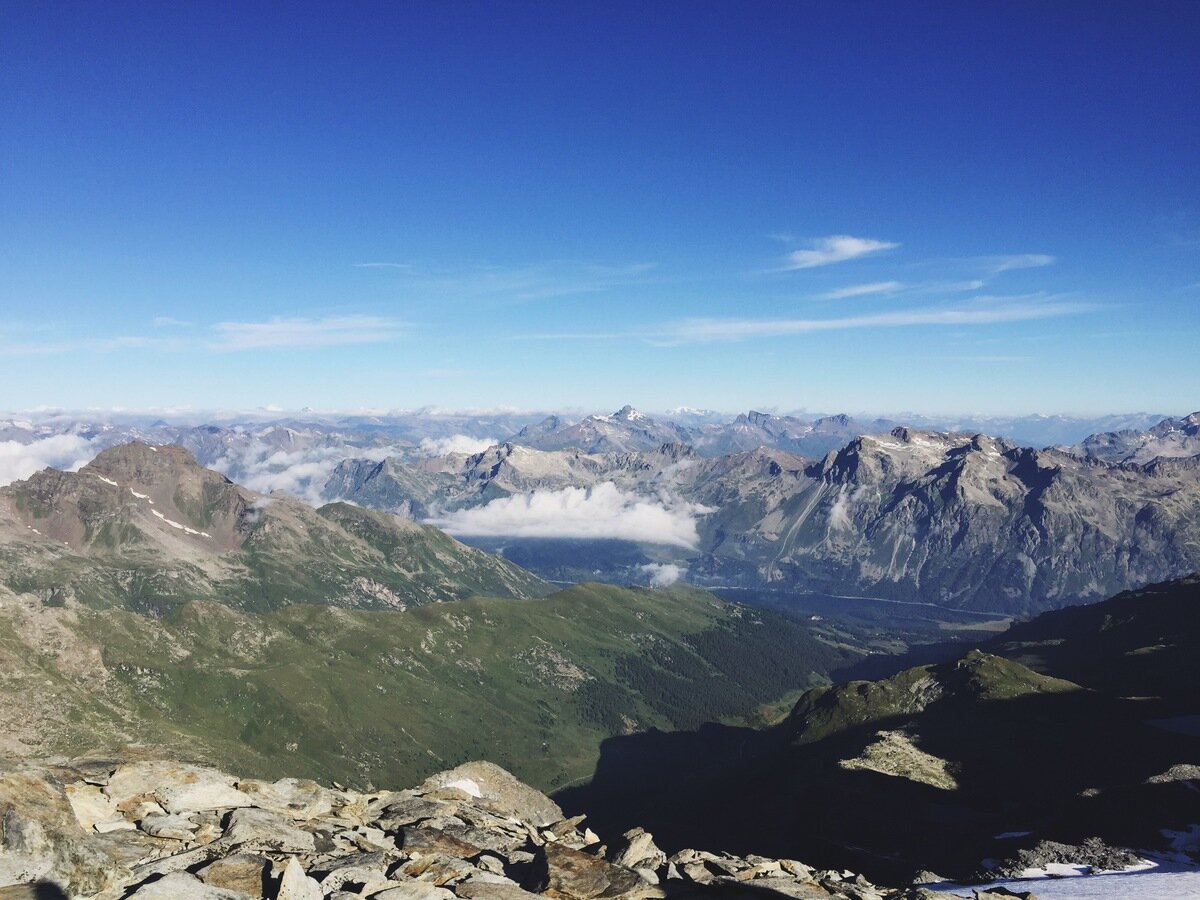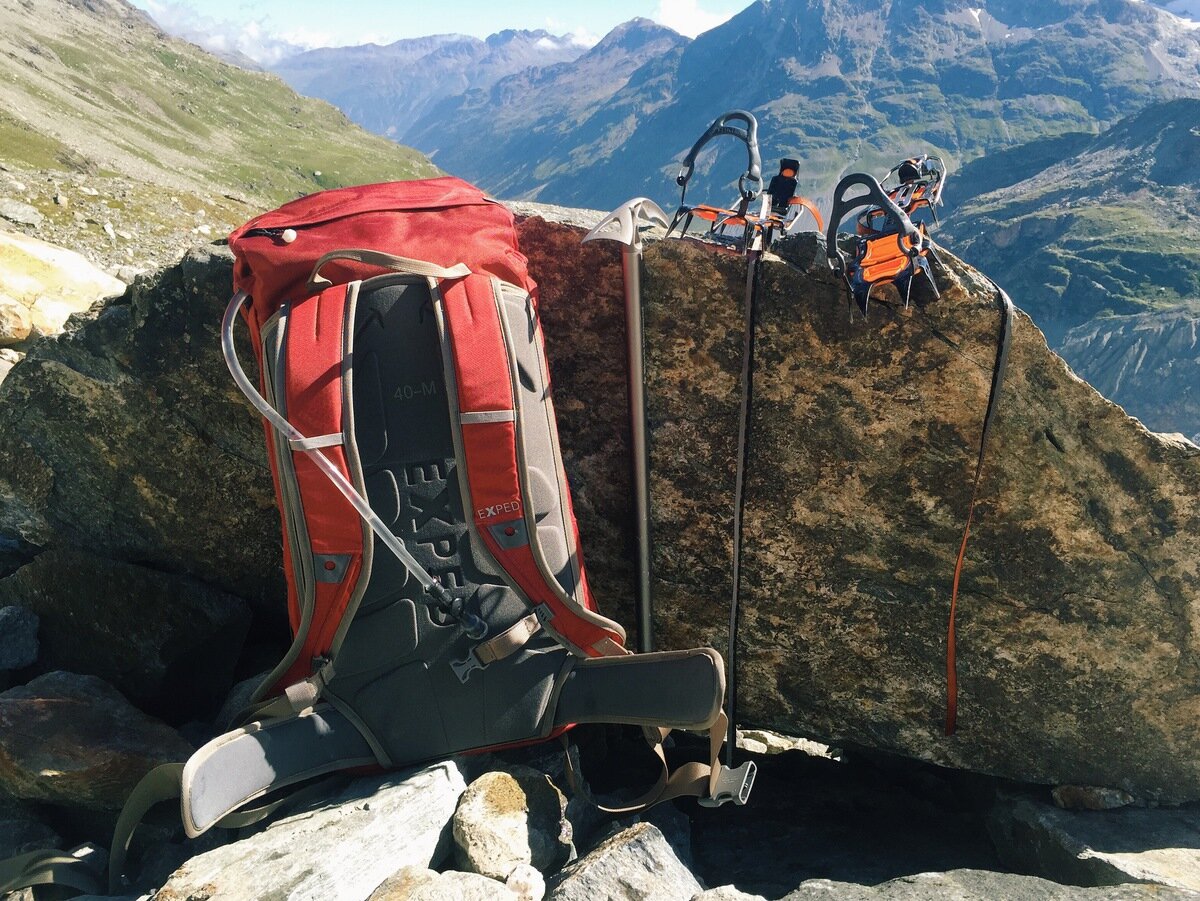Val Roseg, Engadine
As the crow flies, Graubunden is only about 250 km from Lausanne. Yet due to the heavy presence of quite a lot of large mountains, to travel between the two takes almost six hours on the incredibly efficient Swiss train system. Drawn essentially by the fact that all of Graubünden's marketing involves ibex, Tanya and I took the trip for the August 1st long weekend. Tanya went a few days earlier to visit the Swiss national park (there is only one!). After I arrived, we stayed a first night in Pontresina, a charming town where Tanya introduced me to the wonders of the local nusstorte, which is a walnut and honey cake encased in shortbread. At this point the time on the train had already paid for itself.
It's not like we were in Graubünden to see the towns, though. It's the largest and wildest of the Swiss cantons, so the best way to see it seemed to us to be from a high vantage point reached by foot. With this in mind we walked from Pontresina into the Val Roseg, a stunning valley that noses towards the Italian border.
Our destination for the first night was the Chamanna Coaz, a mountain cabin at 2610 m. As we walked further the scenery got more and more spectacular; glaciers appeared behind moraines, there was a kiwi-style braided river and a gorgeous glacier lake. In the afternoon marmots appeared on the sky line and sat in front of the snowy peaks like it was no big deal. The cabin itself was perched overlooking the lake, and way down the valley we could see back to Pontresina where we had started the day.
The next morning we were up before dawn for a quick breakfast, then out into the cool morning to head towards the summit of Il Chapütschin (3386 m). The route went up a steep moraine ridge and by 2800 m we were walking up snow slopes. Another 200 m higher we roped up and stepped onto the Chapütschin glacier (the Vadret dal Chapütschin). The snow was already very soft after the summer heat of the previous few days. We took a short steeper entrance onto the upper glacier on the north-west of the mountain (the Vadrettin dal Chapütschin), contoured, then scrambled up a short ridge of loose rock to the summit. It was still early morning and the air was cool and still.
From the summit we could see into Italy and across it, back into Valais in Switzerland. The Weisshorn was standing tall on the horizon. After a few minutes and a snack on the peak, we turned and descended in the sunshine, back to the cabin.
At this point we weren't done with Val Roseg, and neither was it done with us. We set off from the Coaz hut to walk to another cabin, called the Chamanna da Tschierva, which sits on the other side of the valley. We walked along a higher path for as long as we could, in the hope of getting a glimpse of the Piz Bernina (at one point we briefly saw its top), and were kept moving by the incredible views across to the Bernina massif.
By the time we got to the valley floor we had been on the go for many hours and were tired, and the last 600 m of climb up to the hut turned into wordless plodding on. Nonetheless the views remained fantastic and constantly changing, as gradually we saw more and more of the Tschierva glaciers.
Our original aim was to climb Piz Tschierva the next day, but there were storms forecast so we forewent the mountain start, slept longer, and woke to the sound of heavy rain and thunder outside. The mountain decidedly out of the question, we bided our time until a weather window appeared, then headed back down the valley.
On the journey home we changed trains in Zurich. The crowd leaving the train from Graubünden thronged the stairs. The man standing in front of me was holding his bag carefully. In spending a weekend in Engadine, I only experienced a tiny sliver of what it has to offer, but what I saw was magnificent. And I now understand the value of what the man was carrying - the bag contained a large nusstorte in silver cardboard.





























